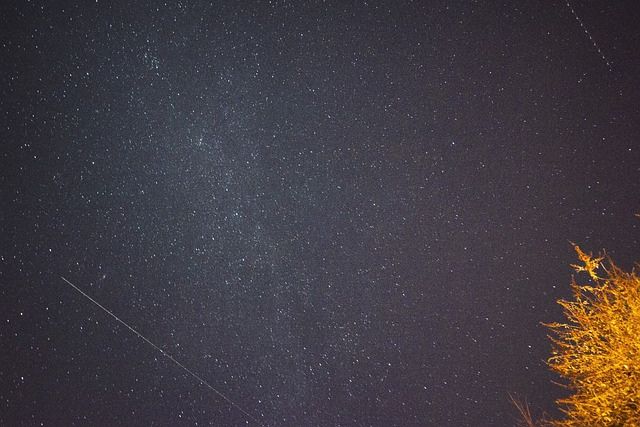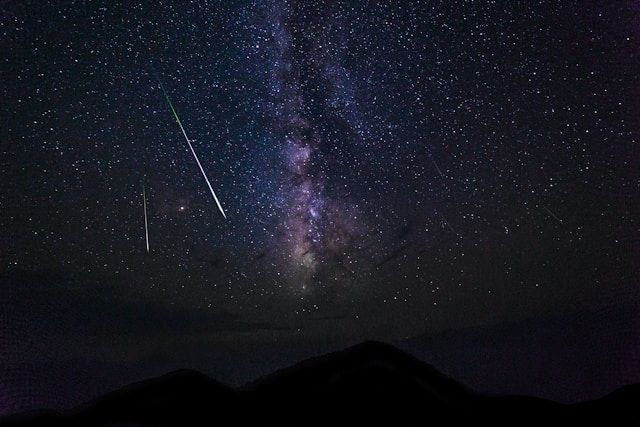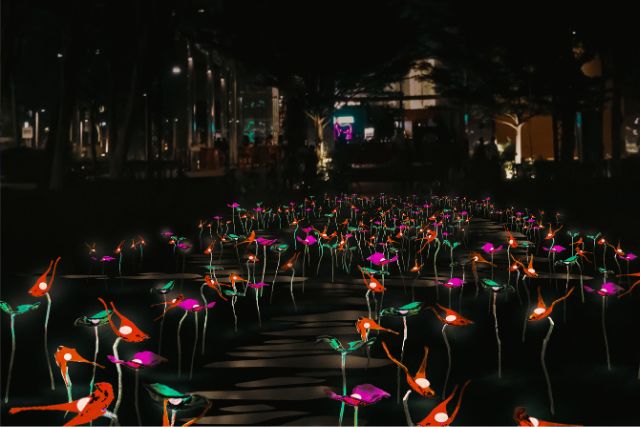Fret not if you missed the Lyrids Meteor Shower in April – the Eta Aquarids Meteor Shower, one of two annual meteor showers caused by Halley’s Comet, is gracing our night skies this May! Known for their speed as they enter the Earth’s atmosphere, Eta Aquarids promise a spectacular experience for those staying up to catching the action in the pre-dawn hours.
Those keen to catch the meteor shower should look for a wide-open viewing area with minimal light pollution after 3am on 6 to 7 May 2025. Weather permitting, keen observers can simply gaze skyward for a view of spectacular “shooting stars” across the entire sky with their naked eyes.
 Image credit: Pixabay
Image credit: Pixabay
In anticipation of this phenomenon, Science Centre Observatory has put some FAQs, to address various questions on the phenomenon and share more about its origins.
1. What are meteors and where do they come from?
Meteors are rocks that enter Earth’s atmosphere at speeds that causes the light around them to glow and burn up. These are the streaks of light that one may see going across the sky in matter of seconds. They are also often referred to as “shooting stars”.
Meteors are within our solar system. They can originate from various sources – such as comets, asteroids, and other planets.
2. What is the difference between a meteor, a meteorite, and a meteoroid?
When a part of an asteroid breaks off and it is still in space, it becomes a meteoroid. When the meteoroid is in Earth’s atmosphere, it becomes a meteor.
If a part of the meteor survives its journey through the Earth’s atmosphere and lands on the Earth’s surface, it is called a meteorite.
3. What is a meteor shower and how often do they occur?
A meteor shower is a celestial event in which a number of meteors are observed to radiate, or come from, from one point in the night sky. Meteor showers are formed when the Earth travels through a cloud of interplanetary debris left behind from the tail of a comet or asteroid that has thrown out large amounts of materials.
While the Earth orbits the Sun and crosses into these dust streams or debris trails, the materials collide into Earth’s atmosphere and burn up, leaving a streak in the sky which is what we see as meteors.
Earth goes through these dust streaks every year, so we can predict when these meteor showers happen on an annual basis.
Eta Aquarids Meteor Shower taking place this May
1. What is the Eta Aquarids Meteor Shower?
The Eta Aquarids meteor shower is an annual meteor shower that peaks during early May every year. Eta Aquarids meteors are known for their speed, entering the Earth’s atmosphere at around 65 kilometres per second. Like the Orionids meteor shower in October, the Eta Aquarids meteor shower occurs when Earth crosses the trail of debris left by comet 1P/Halley (Halley’s Comet). These debris left by Halley’s Comet disintegrate in Earth’s atmosphere, producing streaks of light in our sky.
2. Why is this meteor shower called Eta Aquarids?
Meteors in annual showers are named after their radiant point – the location in the sky where they seem to originate. The Eta Aquarids meteor shower is named for its radiant point near the constellation Aquarius and Eta Aquarii, one of the brightest stars within Aquarius.
3. When will the Eta Aquarids meteor shower take place?
The Eta Aquarids meteor shower is active between 20 April and 21 May and will peak from 6 to 7 May. They are best viewed after 3am, when the radiant point of the meteor shower is higher in the night sky, and after the bright gibbous Moon sets, offering a better chance for observers to spot a meteor.
 Image credit: Unsplash
Image credit: Unsplash
4. How often does the Eta Aquarids meteor shower take place?
The Eta Aquarids meteor shower is an annual meteor shower that peaks during early May every year.
5. What can we expect to see during the Eta Aquarids meteor shower?
Eta Aquarids leave glowing “trains” of debris in their wake which can last from several seconds to minutes. During the peak of the Eta Aquarids meteor shower, observers can expect to witness 50 meteors traversing the night sky per hour.
6. How can I get the best view of this occurrence in Singapore?
Observers should seek darker locations such as parks, beaches, reservoirs, or open spaces away from city lights. Singapore’s weather conditions and frequent cloud cover can also affect visibility of this occurrence. As such, observers should also check the weather forecast for clear skies.
7. Is any special equipment required to view this?
No special equipment is required to view this meteor shower as the Eta Aquarids is best viewed with the naked eye.
8. Will the Science Centre Observatory (SCOB) hold a viewing session for the Eta Aquarids meteor shower?
The Observatory at Science Centre Singapore will not be holding a specific viewing session for this meteor shower. However, on selected Fridays, astronomy enthusiasts can take part in stargazing sessions held by The Observatory for a unique chance to explore the solar system and observe stars and planets up close through a telescope.
Learn more about these sessions here.
Contributed by Science Centre Observatory.
* * * * *
Looking to reach over 100,000 parents in Singapore? Let us amplify your message! Drop your contact details here, and we’ll reach out to you.
Discover exciting family-friendly events and places to explore! Join our Telegram channel for curated parenting recommendations.













































